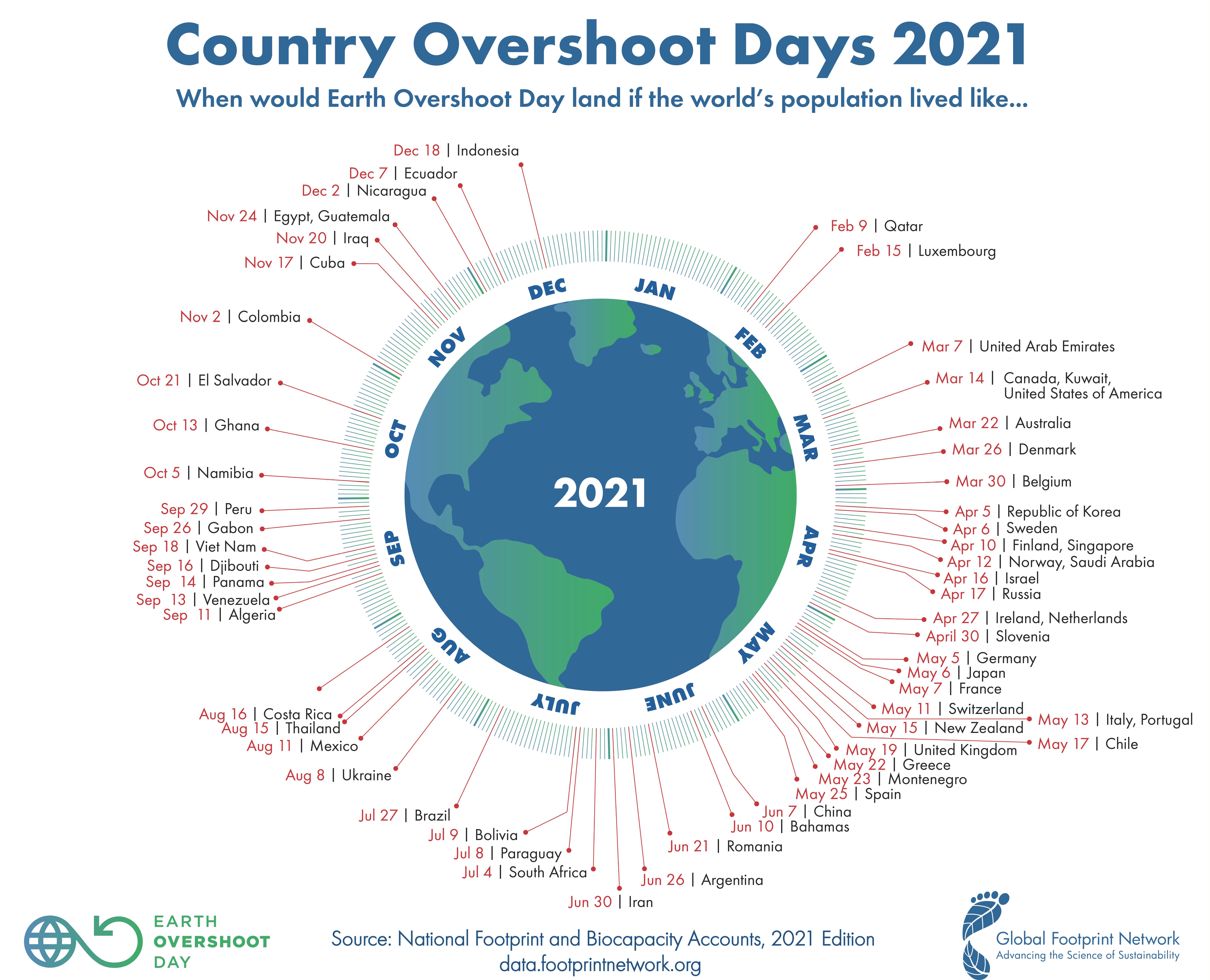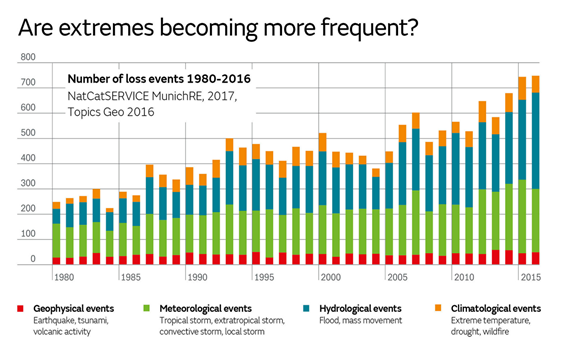14 July 2021 | Built environment
Guest post: Sustainability - The greatest challenge of the construction industry

Dr David Tann explores the significance and urgency of addressing sustainability in the construction sector.
Ahead of the Institute of Government & Public Policy Sustainability in Construction conference in August, David explores the impact of his personal carbon footprint, plus lessons and learnings for the construction industry.
My Personal Overshoot Day
Considering myself a proud environmentally conscientious person, I was astonished earlier this year when I checked my personal carbon and ecological footprint on the www.footprintcalculator.org website. The results showed that my personal Earth Overshoot Day was 21 April! I have consumed my fair share of nature’s biocapacity for the whole year in just 111 days. This did not just shock me, it made me feel ashamed with a sense of failure in my duties as an individual.
I did a few things straightaway including eating less meat, driving less, cycling more, and switching my household electricity and gas to a 100% green energy supplier etc. These activities, I hope, have made a welcoming difference to my personal carbon footprint as my family and I changed our daily routines, but there is still far more that could and needs to be done if we are to become truly responsible global citizens.
If all the 7.88 billion people in the world lived like me and carry on doing little about it, there would be a massive calamity, since that meant we would need 3.3 earths to keep going. But the earth is the only common home for humans, animals, birds and bees and all other inhabitants.
"There can be no Plan B because there is no planet B," said the former UN Secretary-General Ban Ki-Moon back in 2013. "Both science and economics tell us that we need to change our course very soon."
Climate Change Crisis is on Now
Things have moved on since then, and much progress has indeed been made in tackling climate emergency by changing our course. However, I fear these changes are far from soon and fast enough. It is a climate change crisis now. This year the Country Overshoot Day for the UK is 16 May according to the latest report of the Global Footprint Network (see figure below and also from this link), this is only 3 days longer than in 2020. Many other developed countries are in a similar situation.

As rapid urbanisation takes place across all continents, the number of people that live in cities will increase dramatically. According to the World Economic Forum, 56.2% of the global population now lives in cities; this figure is expected to increase to over 70% by the year 2050.
The United Nations calculated that extreme weather events resulted in 15,000 deaths and resulted in economic losses of US $170 billion in 2020, as reported lately by the BBC.
Extreme geophysical or weather-related events such as earthquakes, tsunamis, storms, floods, and droughts can be catastrophic for people and the environment, and the number of such events are certainly on the rise. According to the leading reinsurer Munich Re, the number of such extreme events increased by almost by 200% in the 37 yeas since 1980. (See Graph below, Source: Munich Re). These are nature’s stern warnings to humanity. We must all act now to tackle the crisis, as President Obama said, “we are the first generation to feel the effect of climate change and the last generation who can do something about it.”

Greatest Challenge faced by the Construction Industry
It’s well known that the construction sector plays a vital role in the national economy. At the same time, we must also be very mindful of the environmental impact due to our industry. According to the 2020 Global Status Report for Buildings and Construction, published by the UN Environmental Programme, CO2 emissions from energy consumption in operations of building have increased to their highest level yet in 2019, to approximately 9.95 Gigatonnes. This equals to 1.26 tonnes of carbon generated per year by every person on earth! Once the emissions from the building construction industry is added, the sector accounts for 38% of total global energy-related carbon emissions.
In the United Kingdom, the situation is even more severe than the world average. The UK buildings construction sector accounts for 45% of total carbon emissions with 27% from domestic buildings and 18% from non-domestic buildings. To a large extent this is because the existing housing stock needs to be retrofitted to meet the minimum energy performance standard. Of the 28 million homes in the UK, over 62% are rated as below the minimum energy efficient standard, at EPC grades D – G.
Acceleration is thus urgently required to realise Net Zero Carbon. The Commons Select Committee on Environmental Audit noted that emissions from housing could constitute over 55% of the UK's target for carbon emissions in 2050. In order to reach net-zero, the International Energy Agency estimated that direct building CO2 emissions need to fall by 50% by 2030. The UK government has set a legally binding target to reduce CO2 emissions by 78% by 2035. Professional bodies and quangos such as ICE, CIOB, RICS and LETI have been actively promoting zero carbon practices and design standards in the sector and beyond.
Sustainable Construction
The Environmental Protection Agency defines sustainable construction as "the practice of creating structures and using processes that are environmentally responsible and resource-efficient throughout a building's life-cycle from siting to design, construction, operation, maintenance, renovation and deconstruction."
It is clear not only do we need to design and build all new buildings to meet the energy performance requirements, but even more importantly we must ensure the nation’s large existing housing stock is modernised and brought in line with the expectations of the 21st century.
In order to be truly environmentally sustainable, all buildings must operate at net zero in order to meet climate change targets. The Total Energy Use Intensity (TEUI) should be aimed at less than 35 kWh/m2/year for residential buildings; whilst Thermal Energy Demand Intensity (TEDI) should be limited to 15 kWh/m2/year for space heating for all building types.
Our responsibilities
It is therefore our responsibility to do our utmost and ensure we protect the living environment for the future generations. In this IR 4.0 era, it is vital to take full advantage of digital technologies by enhancing digital collaboration, moving to paperless projects from the office to the workforce, and applying next generation of Building Information Modelling (BIM) as design and maintenance platforms.
For higher education institutions such as the University of East London, we are developing innovative courses such as robotic construction and renewable and sustainable energy technologies. We are also investing in BIM and digital twins for innovative practice in the built environment so that our graduates are equipped with the latest knowledge and skills to help tackle the climate change crisis.
About the Author
Dr David Tann is the Dean of School of Architecture, Computing and Engineering at the University of East London. He worked as a junior consulting civil and structural engineer in Cardiff before joining the then Polytechnic of Wales to embark on an academic career. David’s research interests are in the areas of numerical modelling, sustainable design of infrastructure, structural strengthening of degraded concrete structures, renewable and sustainable energy. He is a Senior Fellow of the Higher Education Academy; a Chartered Engineer, Fellow of the Institution of Civil Engineers, and the chair of ICE’s Academic Qualifications Panel.
Sustainability in Construction
In an effort to meet the net-zero 2050 target, the construction industry – which, according to the UK Green Buildings Council (GBC) contributes to approximately 40% of the UK’s total carbon footprint – must seek drastic changes in sustainability.
Dr David Tann is chairing the upcoming IGPP Sustainability in Construction conference on 24th August 2021. This half-day conference is part of the 2021 Construction Series. It provides an excellent opportunity for leaders and key players in the construction sector to exchange ideas and share best practice.
Why attend?
- Discover actionable insights towards a zero-waste future with circular economy
- Learn more about the benefits of offsite construction
- Examine the benefits of Passivhaus techniques and strategies for implementation
- Debate the future of 3D printed buildings
- Scrutinise proposals for new materials and building techniques vs retrofitting
- Consider economic and socio-economic benefits of improved sustainability in the sector
- Maximise efficiency within transport and infrastructure whilst reducing pollution and waste
- Embrace innovation without greenwashing by undertaking life cycle analysis and whole life costing
View the agenda and learn more about Sustainability in Construction 2021 here.
Events

The Future of Surgery Show 2026
20 January 2026

Advancing Inclusivity in the Workplace Conference 2026
28 January 2026

AI in Government 2026
29 January 2026

The Annual Information Management and Digital Construction Conference 2026
3 February 2026

The Future of Construction 2026: Building Smarter, Faster, Greener
3 February 2026
Courses

Effective Leadership Through Emotional Intelligence - CMI Level 7 Award
20 January 2026
5 spaces available
The Carbon Championing Programme
21 January 2026
Sold Out

Strategic Approaches to Wellbeing and Resilience Programme - CMI Level 7
3 February 2026
3 spaces available

The Aspiring Leaders Programme
10 February 2026
Sold Out
Construction Leadership and Management Development Programme - CMI Level 5
10 February 2026